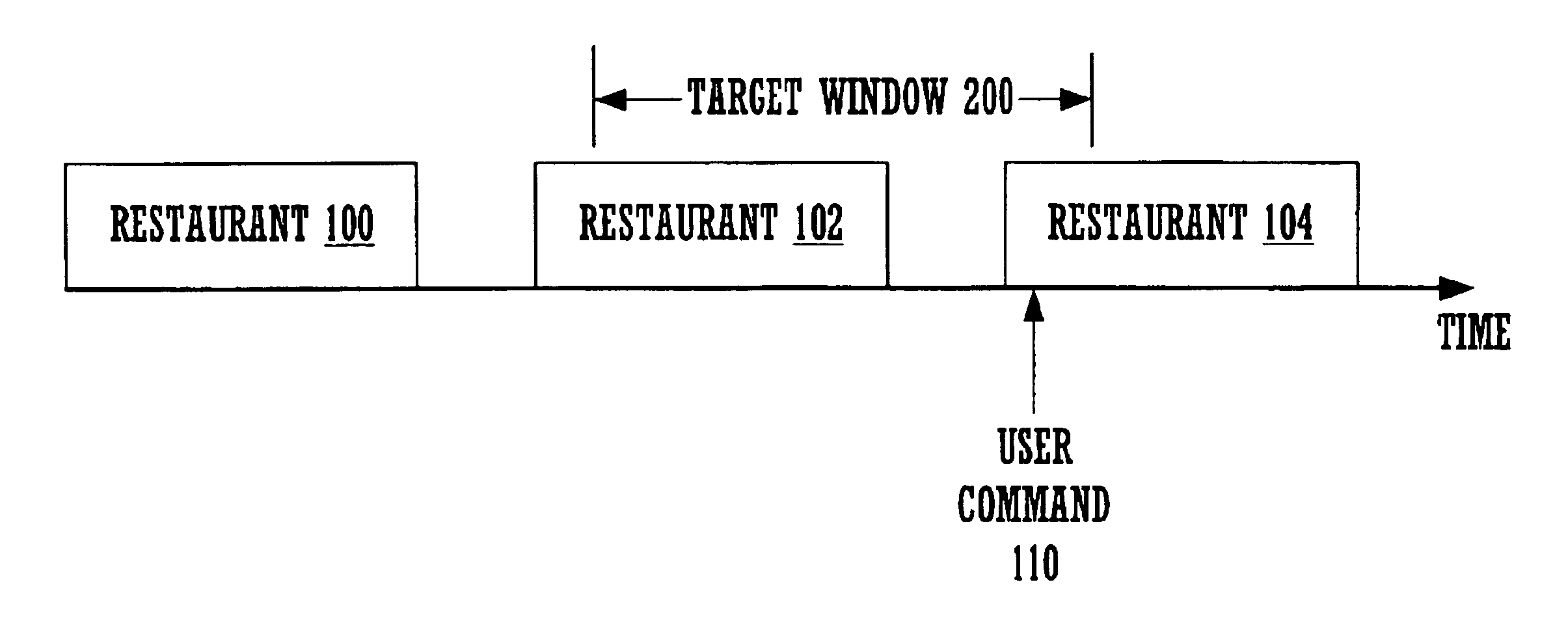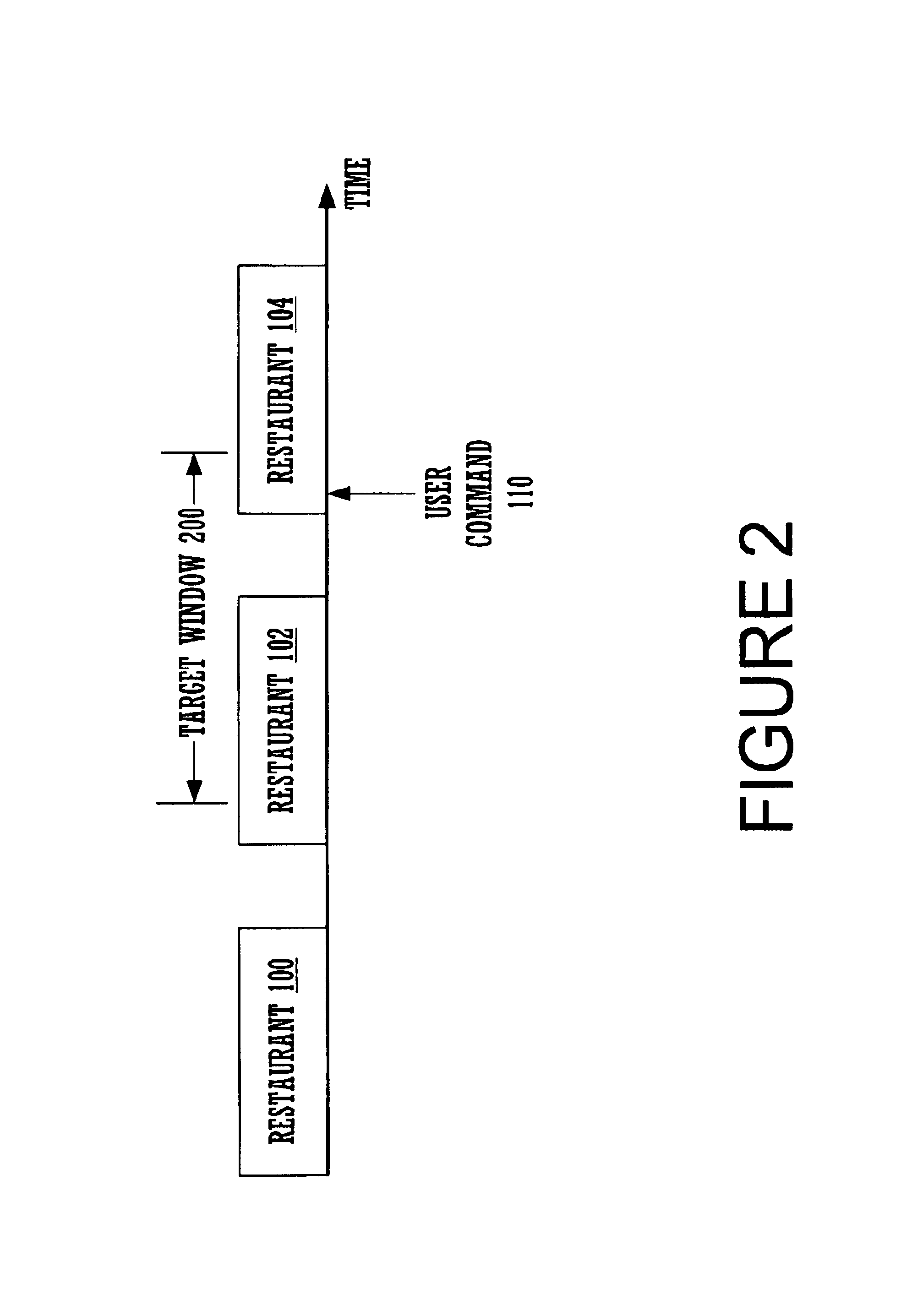Handling of speech recognition in a declarative markup language
a markup language and speech recognition technology, applied in speech analysis, speech recognition, instruments, etc., to achieve the effects of improving playback, easy solving, and improving list navigation
- Summary
- Abstract
- Description
- Claims
- Application Information
AI Technical Summary
Benefits of technology
Problems solved by technology
Method used
Image
Examples
case 1
d Application / Selections Possible During Data Playback
[0062]Here, the application is designed to allow users to say a sports team, e.g. make a selection 310, at any time. An example of an unmoded application can be found in the Tellme consumer service, reachable at +1 (800) 555-TELL, stocks and sports applications that allow users to easily move from hearing the selected data 302 (e.g. a sports score or a stock quote) to hearing the relevant data for another team or stock.
[0063]When there is any spoken command given (e.g. the cancel 320A will now represent any command, e.g. “cancel” or “Boston”) its temporal offset relative to the start of playback (as determined from use of a ) can be considered in deciding how to interpret the command. Cancel-type commands can be handled as described above.
[0064]For other commands, e.g. other selections there are several strategies that can be adopted:[0065]I. add the command for the currently playing data to a list of excluded items and then perf...
case 2
Application / Selections not Possible During Data Playback
[0070]Turning now to moded applications where it is not generally possible to make a “high level” selection while listening to the data. In VoiceXML from a programmatic standpoint this would mean that during playback of the selected data 302, the grammar containing the college basketball team names is no longer active.
[0071]More specifically, at the point where the selection 310 is made a first grammar, “MenCollBasketballTeamChoices”, would be active and then at a later point, e.g. when the cancel 320A (or 320B) came, a second grammar, “ScoreNavigationCommands”, would be active. Since the second grammar does not include the options from the first grammar then one of two things will happen if the user repeats a sports team name the speech recognizer will either: (i) false accept the team name as one of the options in the second grammar or (ii) correctly reject the team name as out of grammar, resulting in a .
[0072]Two strategies...
PUM
 Login to View More
Login to View More Abstract
Description
Claims
Application Information
 Login to View More
Login to View More - R&D
- Intellectual Property
- Life Sciences
- Materials
- Tech Scout
- Unparalleled Data Quality
- Higher Quality Content
- 60% Fewer Hallucinations
Browse by: Latest US Patents, China's latest patents, Technical Efficacy Thesaurus, Application Domain, Technology Topic, Popular Technical Reports.
© 2025 PatSnap. All rights reserved.Legal|Privacy policy|Modern Slavery Act Transparency Statement|Sitemap|About US| Contact US: help@patsnap.com



